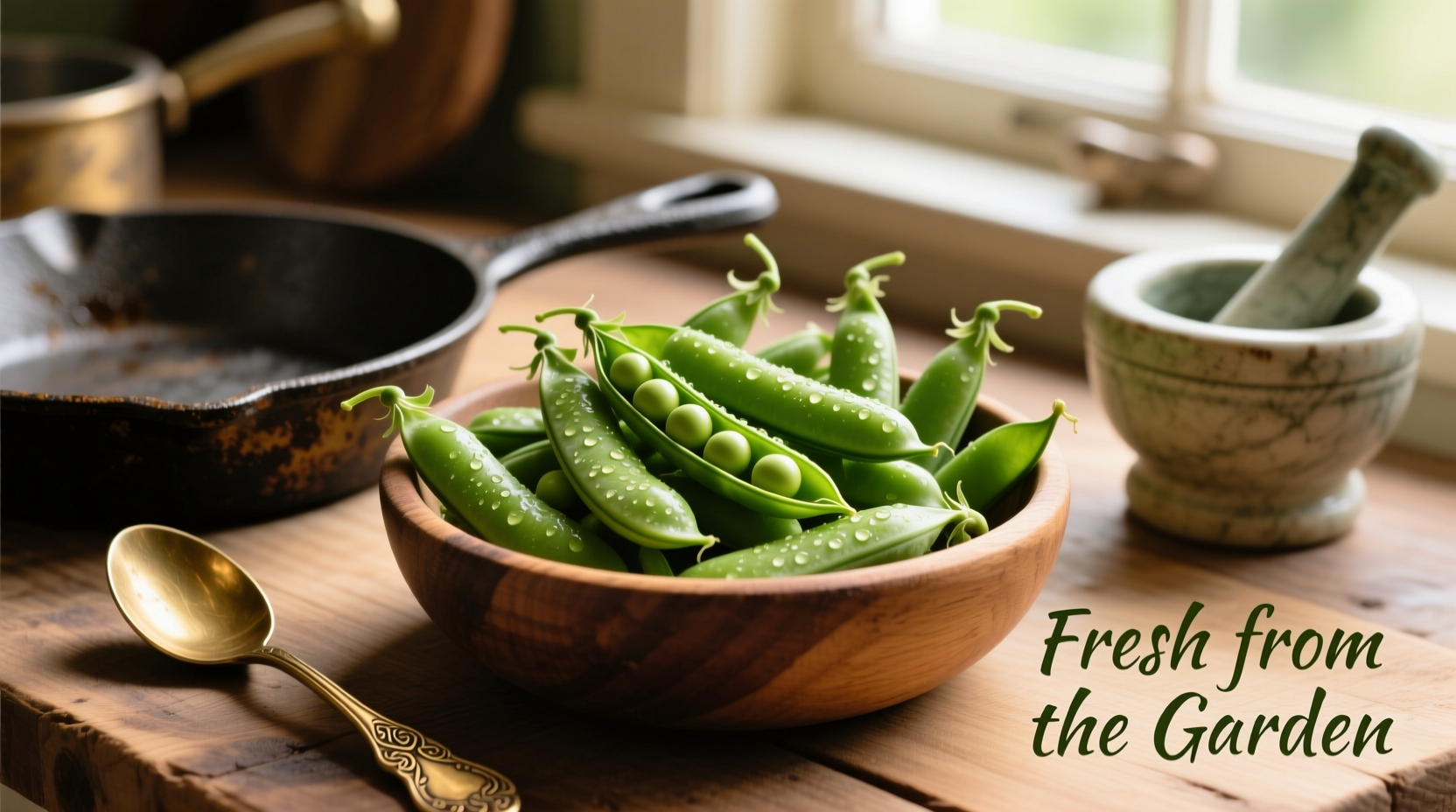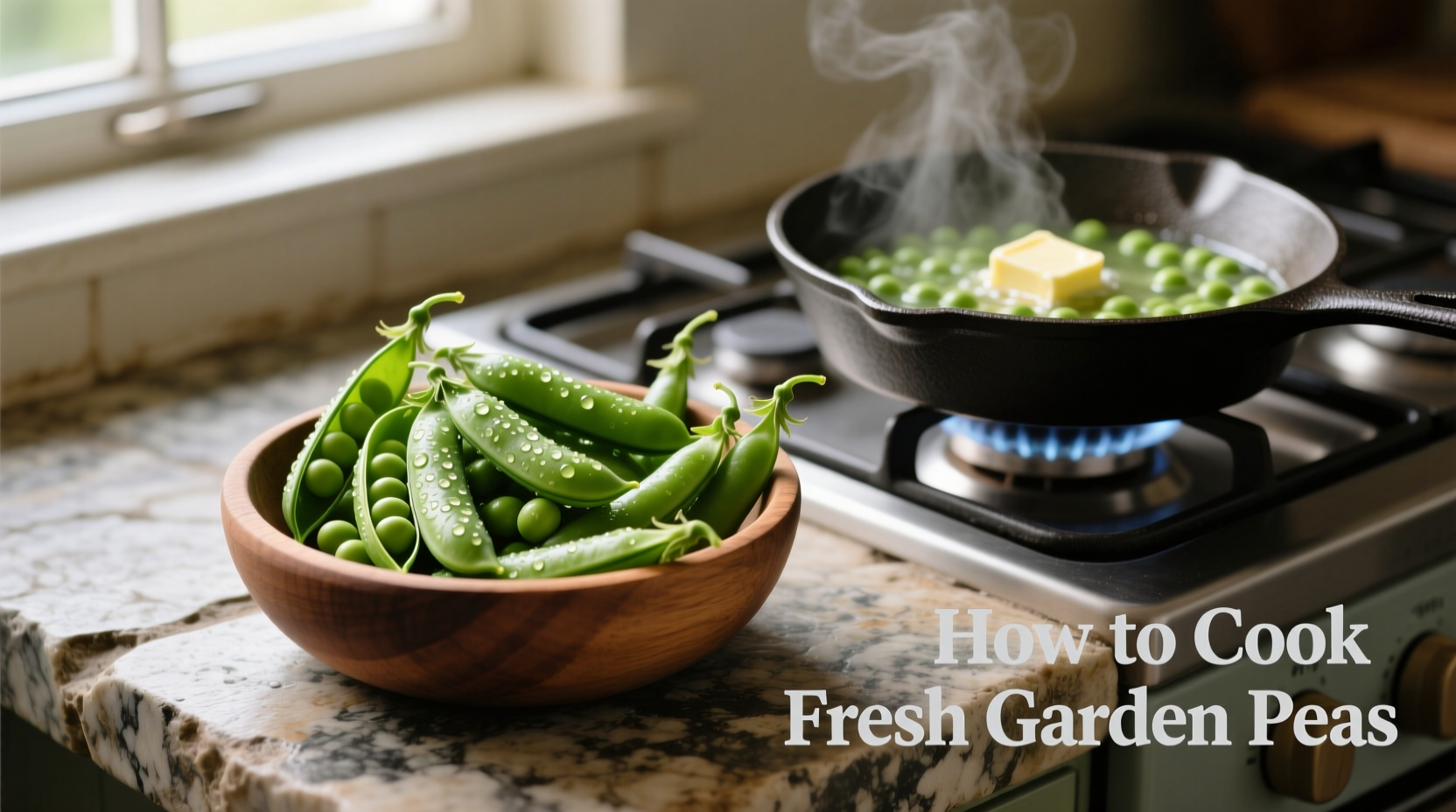Nothing compares to the sweet, crisp flavor of freshly picked garden peas. Unlike their frozen or canned counterparts, fresh peas require minimal cooking to shine—just 2-3 minutes in boiling water or 5 minutes steamed. Proper preparation preserves their natural sugars and vibrant green color, while overcooking turns them mushy and dull. Follow these professional techniques to maximize flavor in every bite.
Why Fresh Garden Peas Deserve Special Attention
Fresh peas contain natural sugars that begin converting to starch within hours of harvest. According to the USDA Agricultural Research Service, garden peas lose up to 50% of their sweetness within 6 hours after picking. This rapid transformation explains why supermarket "fresh" peas often lack the sweetness of homegrown varieties.
| Preparation Method | Time to Flavor Loss | Sugar Content Remaining |
|---|---|---|
| Left on vine | Immediately after picking | 100% |
| Refrigerated raw | 6 hours | 50% |
| Blanched & frozen | 6 months | 85% |
Step-by-Step: From Garden to Plate
Selecting and Preparing Your Peas
Choose pods that feel plump and slightly rounded. Avoid yellowing or overly bulging pods, which indicate overripeness. The Oregon State University Extension recommends harvesting peas when pods feel rounded but before individual peas create distinct bumps.
- Shelling technique: Press thumb along the seam of the pod to open it
- Quick rinse: Swirl peas in cold water to remove debris
- Immediate cooking: Process within 2 hours for best flavor retention
Professional Cooking Methods Compared
Each cooking method affects texture and flavor differently. The ideal approach depends on your intended dish:
| Method | Time | Best For | Pro Tip |
|---|---|---|---|
| Boiling | 2-3 minutes | Classic preparation | Add 1 tsp sugar to water to enhance natural sweetness |
| Steaming | 4-5 minutes | Preserving nutrients | Place peas in basket when water reaches rolling boil |
| Sautéing | 3-4 minutes | Recipe integration | Cook aromatics first, add peas last to maintain crispness |

Flavor Pairing Science: What Works Best With Peas
Peas contain glutamic acid—the same compound that gives Parmesan its umami quality. This explains why they pair beautifully with:
- Fresh herbs: Mint enhances sweetness, tarragon adds complexity
- Citrus: Lemon zest brightens without overwhelming delicate flavor
- Alliums: Shallots provide subtle sweetness without harshness of onions
- Fats: Butter or olive oil carries flavor compounds effectively
3 Chef-Tested Fresh Pea Recipes
Classic Buttered Peas (5 minutes)
After cooking, drain peas and return to warm pot. Add 1 tbsp butter, 1 tsp fresh mint, salt to taste, and a squeeze of lemon. Toss gently for 30 seconds. The residual heat melts the butter without overcooking.
Pea and Prosciutto Sauté (10 minutes)
Sauté 2 oz prosciutto until crisp. Remove, then sauté 1 minced shallot until translucent. Add 2 cups peas and 1/4 cup vegetable broth. Cook 3 minutes until broth reduces. Return prosciutto, add black pepper, and finish with 1 tsp lemon zest.
Spring Pea Soup (20 minutes)
Sauté 1 diced leek and 1 stalk celery until soft. Add 3 cups peas, 2 cups vegetable broth, and 1 sprig thyme. Simmer 10 minutes. Remove thyme, blend until smooth, then stir in 1/4 cup heavy cream. Season with salt and white pepper.
Storage Solutions That Actually Work
For short-term storage, keep unshelled peas in a perforated plastic bag in the crisper drawer. The National Center for Home Food Preservation confirms that blanching peas for 1 minute before freezing preserves both color and nutrients better than raw freezing.
Freezing timeline:
- 0-2 hours after harvest: Optimal for freezing
- Blanching: 1 minute in boiling water, then immediate ice bath
- Flash freeze: Spread on baking sheet before bagging
- Storage: Up to 12 months at 0°F (-18°C)
Common Mistakes That Ruin Fresh Peas
Avoid these pitfalls that turn sweet peas into disappointing side dishes:
- Overcooking: Peas need just 2-3 minutes in boiling water
- Salt too early: Add salt after cooking to prevent toughening
- Using dull pots: Aluminum reacts with pea chlorophyll, turning them olive green
- Skipping the ice bath: Residual heat continues cooking after removal from water











 浙公网安备
33010002000092号
浙公网安备
33010002000092号 浙B2-20120091-4
浙B2-20120091-4